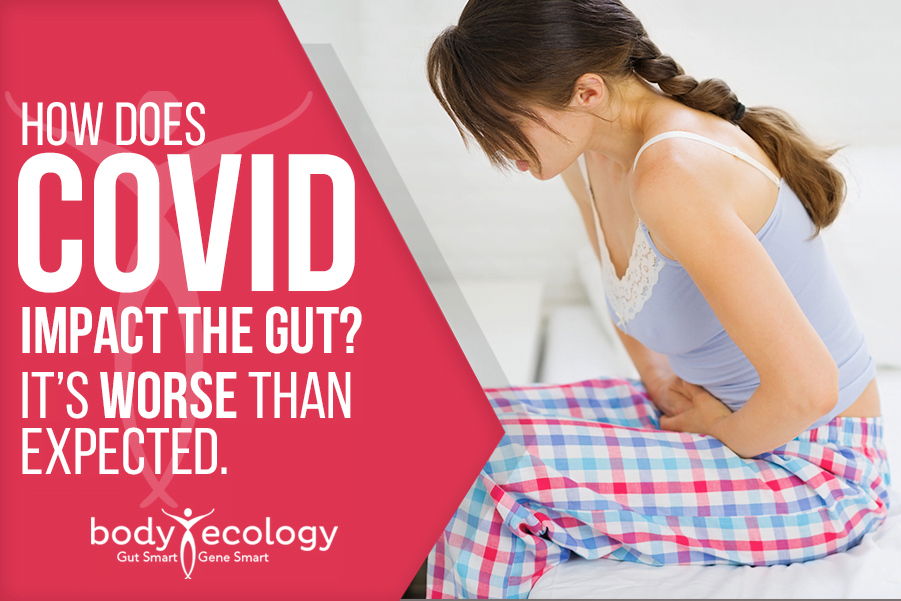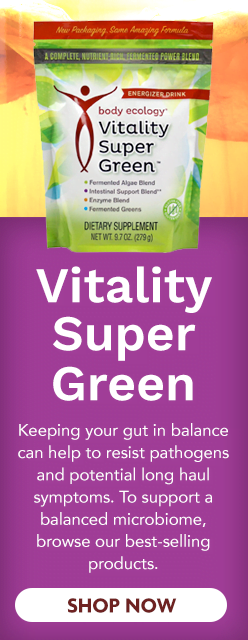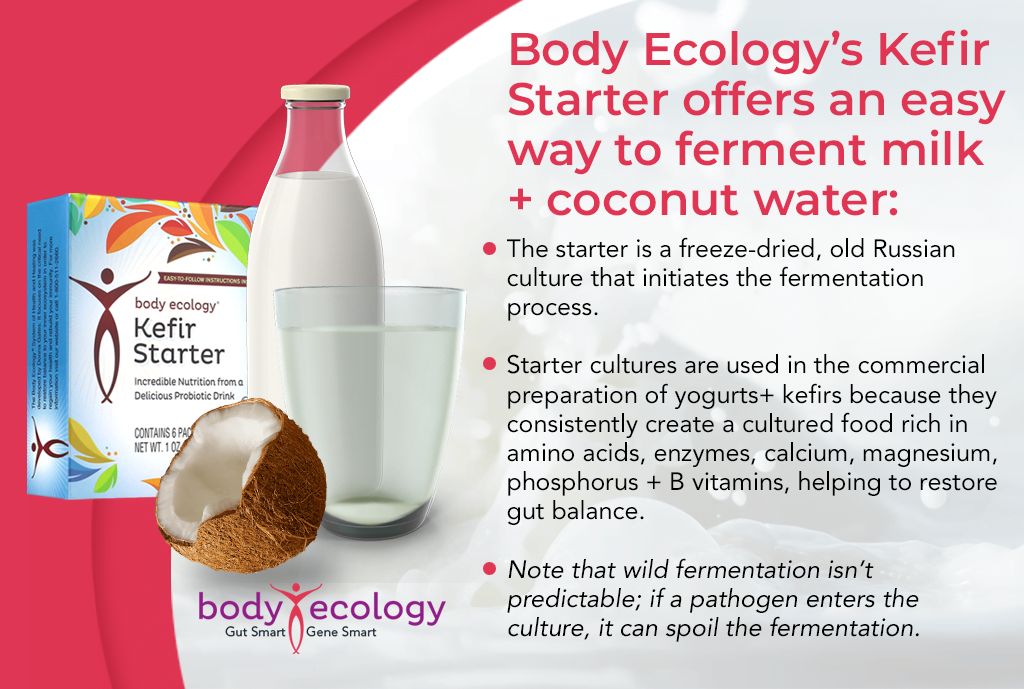
Suffering from post-COVID gut issues? Research points to yeast.
Experts are gradually learning more about the ways gut health has been impacted in patients who’ve recovered from COVID-19.
Several of the issues long haulers contend with are related to gut health. The gut is immediately compromised when the virus enters your body, and scientists are observing increases in the amount of yeast in the gut of those recovered from COVID-19.1
Higher levels of some yeast species – in particular, a common fungus known as Candida albicans – could play a role in a difficult cycle where low-level inflammation encourages the proliferation of fungal colonies and fungal colonization, thus promoting more inflammation.2
Another species of yeast, Candida auris, has also become more commonplace in the guts of the COVID-recovered. This is a much more dangerous species, which is now known to be resistant to commonly prescribed medications.3
And, there’s been concern about the proliferation of mold species, such as Aspergillus flavus, which has been found in the stool of COVID patients after COVID-19 is resolved.1
COVID digestive issues: Patients have high levels of fungal pathogens
In October of 2020, an important study was conducted by Chinese researchers:1
- Shotgun metagenomic sequencing analysis (a method that allows scientists to assess the diversity of bacteria in a sample and detect the number of microbes under different circumstances) was conducted on stool samples taken from 30 patients diagnosed with COVID-19 in Hong Kong (from February 5 through May 12, 2020).
- Stool samples were collected two to three times per week from the time patients entered the hospital until they were discharged.
- Stool samples containing information on the composition of the microbiomes of patients with COVID-19 were compared with nine subjects who had been diagnosed with pneumonia, unrelated to COVID-19, and also with 30 healthy individuals (control group).
- The stool samples were tested from the time the patients entered the hospital until they were cleared of SARS-CoV-2.
Scientists learned that patients who had had COVID-19 exhibited significant changes to their microbiome compared with controls – which included an abundance of Candida albicans and a very diverse microbiome at the time they were hospitalized.
Stool samples from 22 patients with COVID-19 were not significantly different from the control group while they were hospitalized. But eight of the 30 patients with COVID-19 had significant differences in their microbiome up until their discharge.
The diversity of the microbiome of the final stool samples gathered from patients with COVID just before discharge was two and a half times higher than the control group.
The stool samples collected from COVID-19 patients throughout their hospital stay had increased levels of the pathogenic fungal species Candida albicans, Candida auris, and Aspergillus flavus, compared with controls.
Two fungal pathogens related to respiratory disorders, A. flavus and Aspergillus niger, were found in stool samples from a subset of patients with COVID-19, even after they tested as cleared of SARS-CoV-2.
Ultimately, researchers discovered significant diversity in the microbiomes of 30 patients with COVID-19 when compared with the control group. However, along with the diversity of the microbiomes of COVID patients tested was an increase in pathogenic fungal species candida and aspergillus.
Unbalanced gut microbiomes and chronic gut dysbiosis continued in a subset of patients with COVID-19 up to 12 days after being cleared of SARS-CoV-2.

Aspergillus is one of the most common mold species, just as candida is one of the most common species of yeast. Both are a type of fungus, but both are very different. A fungus that grows in a multicellular pattern is considered a mold, whereas a fungus that grows in a single-celled pattern is considered yeast.
Functional Medicine doctors can order a stool test to confirm that you have candida overgrowth or an aspergillus infection. Your doctor may requisition such a test from a reputable lab, like Great Plains Labs, that can determine whether yeast and/or aspergillus levels in your gut are normal or out of range.
This test is called an “OAT” test – which stands for organic acids test. An OAT test looks at many different markers, of which Candida albicans and Aspergillus flavus are but two.
Following the results of the Chinese study, testing for mold and yeast in stool should be routinely ordered for all long haulers, particularly those experiencing COVID digestive issues.
Researchers are continuing to learn what causes pathogenic fungal colonies to proliferate and potentially cause harm to the gut in recovered patients. But the bottom line is this. If you’re having COVID digestive issues after recovery, it would be wise to focus on supporting and repairing your gut.
What is candida? And how do you manage its overgrowth?
Prior to the 1990s, it was thought that yeast existed in the GI tract of most mammals as a commensal species – or as part of a relationship where one species (i.e., yeast) could obtain benefits from the host, while other species are neither harmed nor would not necessarily benefit (i.e., beneficial bacteria).4
In other words, some candida in the gut is considered normal.
A review article in the German journal Deutsches Arzteblatt, published in 2009, found that certain yeast species, particularly candida, as mentioned above, are a normal part of the gastrointestinal environment in a majority of healthy adults.4 Yet by the late 1990s, the propensity of yeast to become overgrown in the GI tract began to garner attention.
Here’s why:
- Candida infections can often be found in the body in areas where mucus membranes transition into the skin. Those areas are called mucocutaneous zones. Examples include the lips, nostrils, vagina, foreskin, and others.
- Candida infections in these “zones” are typically due to a weak immune system or when commensal strains of yeast, which, through altered gene expression, develop into potentially harmful strains.
- An altered gene expression in some yeast species can transform commensal strains into pathogenic strains that can encourage the formation of biofilms, deteriorate tissues, and become immune to the body’s defenses.
The mucosal lining of the gut is vulnerable to candida infections.4 But researchers have been hesitant to label such infections as scientifically significant. Since COVID-19 is a recent phenomenon, studies are limited.
It’s known that intestinal yeast and other fungi can significantly impact a patient’s immunity by providing systemic immune protection against pathogenic bacterial and fungal infections throughout the body.5
In other words, the balance of bacteria, beneficial yeast, and other organisms in the gut can offer protection against pathogenic species that could travel systemically throughout the body, causing significant damage. Keeping microorganisms in the gut in balance, then, is essential to support recovery from COVID digestive issues.
Bring back balance to your gut with Body Ecology Bundles – designed to save you big on our most popular products.
As the Chinese study demonstrates, it has yet to be discovered whether changes or proliferation in intestinal fungi contribute to or result from the SARS-CoV-2 infection.
Thankfully, there are several ways to naturally curb the overgrowth of candida:
– Eat fermented foods.
Yeast overgrowth may also trigger allergic reactions and other symptoms, which have been shown to respond to treatment with probiotics, according to some recent studies. For example, Lactobacilli has been found to suppress candida growth and biofilm development in vitro.6
Likewise, other research papers have shown the beneficial effects of probiotics in reducing mucocutaneous candida infections throughout the body, often brought on by serious immune conditions such as HIV.7 Probiotics may reduce the persistent fungal infections in these patients, with potential for those showing COVID digestive issues.
A great way to introduce more Lactobacillus into your gut is through organic foods and beverages that are teeming with these beneficial bacteria. These then create the proper environment that encourages other species of good bacteria to proliferate.
Because you don’t have to deal with the old-fashioned grain technique, starter cultures are much more convenient too. However, both work great and introduce beneficial bacteria into your colon, helping to strengthen your immune system.
Consuming fermented vegetables is another effective way to repopulate the gut with beneficial bacteria that will support a balanced microbiome – the key to restoring health to the immune system following COVID. In regions around the world where people regularly eat cultured vegetables, they have low rates of COVID-19.81
Eating fermented vegetables also causes a better response to vaccines — if you choose to be vaccinated or are forced to. Today, when so many parents are concerned about their children, adding fermented foods like these to each meal is one of the most important ways to protect them.
– Drink living probiotics.
Body Ecology also offers two powerful – and deliciously sour – probiotic liquids: CocoBiotic and InnergyBiotic. Both are packed with an incredible diversity of Lactobacillus bacteria. It’s this diversity that’s needed for a truly robust immune system and relief from COVID digestive issues. Both are offered in three-pack or six-pack bundles.
While probiotic supplements in capsules or powders are certainly valuable, they’ll never have the “Wisdom of Nature” that InnergyBiotic and CocoBiotic have. Why?
- To make them, we use a unique proprietary process utilizing biodynamically grown rice and organic quinoa, millet, and chickpeas.
- These are then fermented to create a “culture.” Using a trademarked technique developed years ago in Australia, the culture is then fermented again with water and coconut water into CocoBiotic and InnergyBiotic.
- You can tell from its name that CocoBiotic has the benefits of coconut water, with the added benefits of fermentation. (No sugar, with all the nutrients enhanced.) You’re also getting the nutrients found in quinoa, millet, and chickpeas, but fermentation eliminates the phytic acid, lectins, and oxalates.
Three ounces with your meals helps digestion, and, more importantly in these times, adds an amazing diversity of beneficial bacteria that man cannot create in a probiotic supplement. These are not a “drink” but a powerful, living probiotic.
Have you become a “long hauler?” As the studies show, one of the essential steps to recovery will require that you establish a healthy inner ecosystem in your gut.
REFERENCES:
- 1. Zuo T, Zhan H, Zhang F, et al. Alterations in Fecal Fungal Microbiome of Patients With COVID-19 During Time of Hospitalization until Discharge. Gastroenterology. 2020;159(4):1302-1310.e5. doi:10.1053/j.gastro.2020.06.048.
- 2. Kumamoto CA. Inflammation and gastrointestinal Candida colonization. Curr Opin Microbiol. 2011;14(4):386-391. doi:10.1016/j.mib.2011.07.015.
- 3. Lone SA, Ahmad A. Candida auris-the growing menace to global health. Mycoses. 2019 Aug;62(8):620-637. doi: 10.1111/myc.12904. Epub 2019 Jun 18. PMID: 30773703.
- 4. Schulze J, Sonnenborn U. Yeasts in the gut: from commensals to infectious agents. Dtsch Arztebl Int. 2009;106(51-52):837-842. doi:10.3238/arztebl.2009.0837.
- 5. Li XV, Leonardi I, Iliev ID. Gut Mycobiota in Immunity and Inflammatory Disease. Immunity. 2019;50(6):1365-1379. doi:10.1016/j.immuni.2019.05.023.
- 6. Victor H. Matsubara, H. M. H. N. Bandara, Marcia P. A. Mayer, Lakshman P. Samaranayake, Probiotics as Antifungals in Mucosal Candidiasis, Clinical Infectious Diseases, Volume 62, Issue 9, 1 May 2016, Pages 1143–1153, https://doi.org/10.1093/cid/ciw038.
- 7. Salari S, Ghasemi Nejad Almani P. Antifungal effects of Lactobacillus acidophilus and Lactobacillus plantarum. Against different oral Candida species isolated from HIV/ AIDS patients: an in vitro study. J Oral Microbiol. 2020;12(1):1769386. Published 2020 May 25. doi:10.1080/20002297.2020.1769386.
- 8. SBousquet J, Anto JM, Czarlewski W, Haahtela T, Fonseca SC, Iaccarino G, Blain H, Vidal A, Sheikh A, Akdis CA, Zuberbier T; ARIA group. Cabbage and fermented vegetables: From death rate heterogeneity in countries to candidates for mitigation strategies of severe COVID-19. Allergy. 2021 Mar;76(3):735-750. doi: 10.1111/all.14549. Epub 2020 Sep 15. PMID: 32762135; PMCID: PMC7436771.










